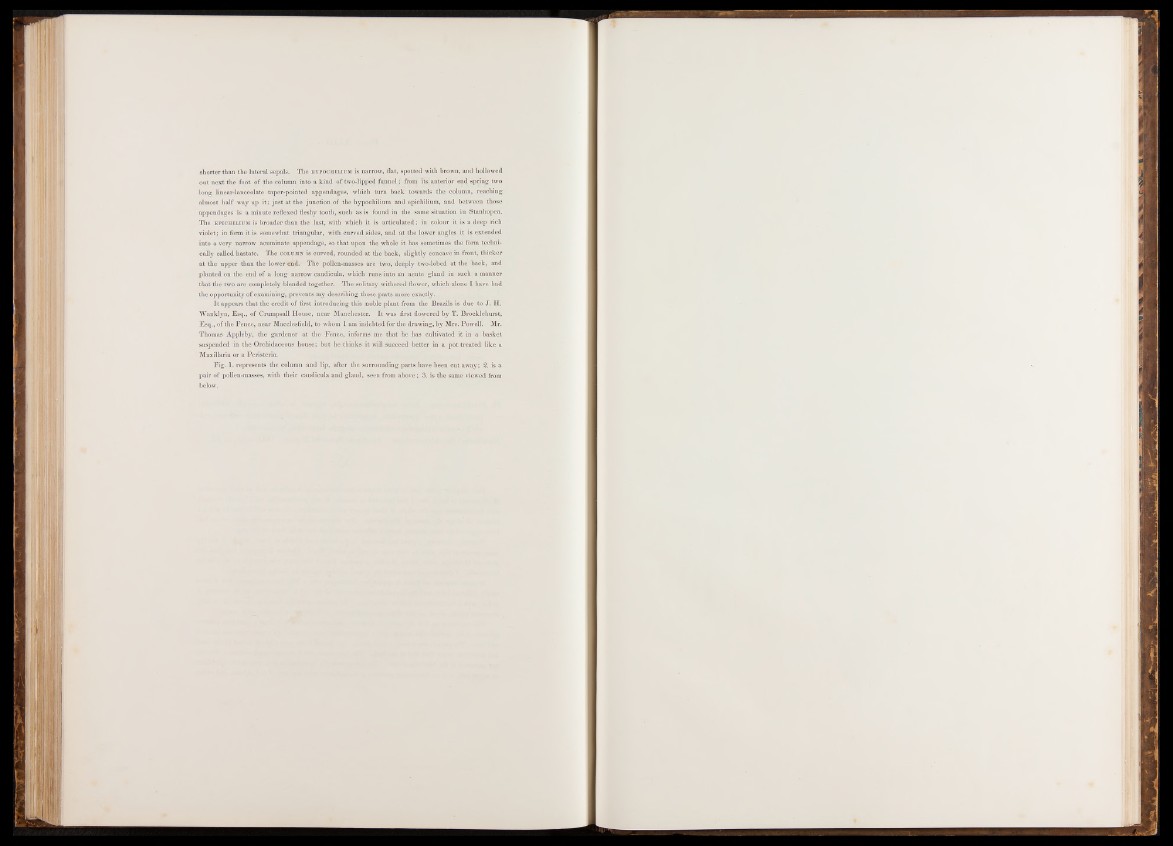
shorter than the lateral sepals. The hypochilium is narrow, flat, spotted with brown, and hollowed
out next the foot of the column into a kind of two-lipped funnel; from its anterior end spring two
long linear-lanceolate taper-pointed appendages, which turn back towards the column, reaching
almost half way up it; just at the junction of the hypochilium and epichilium, and between those
appendages is a minute reflexed fleshy tooth, such as is found in the same situation in Stanhopea.
The epichilium is broader than the last, with which it is articulated; in colour it is a deep rich
violet; in form it is somewhat triangular, with curved sides, and at the lower angles it is extended
into a very narrow acuminate appendage, so that upon the whole it has sometimes the form technically
called hastate. The column is curved, rounded at the back, slightly concave in front, thicker
at the upper than the lower end. The pollen-masses are two, deeply two-lobed at the back, and
planted on the end of a long narrow caudicula, which- runs into an acute gland in such a manner
that the two are completely blended together. The solitary withered flower, which alone I have had
the opportunity of examining, prevents my describing those parts more exactly.
It appears that the credit of first introducing this noble plant from the Brazils is due to J. H.
Wanklyn, Esq., of Crumpsall House, near Manchester. It was first flowered by T. Brocklehurst,
Esq., of the Fence, near Macclesfield, to whom I am indebted for the drawing, by Mrs. Powell. Mr.
Thomas Appleby, the gardener at the Fence, informs me that he has cultivated it in a basket
suspended in the Orchidaceous house; but he thinks it will succeed better in a pot treated like a
Maxillaria or a Peristeria.
Fig.-l. represents the column and lip, after the surrounding.parts have been cut away; 2. is a
pair of pollen-masses, with their caudicula and gland, seen from above; 3. is the same viewed from
below.